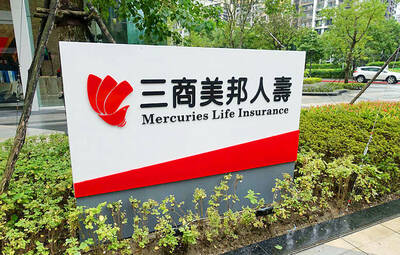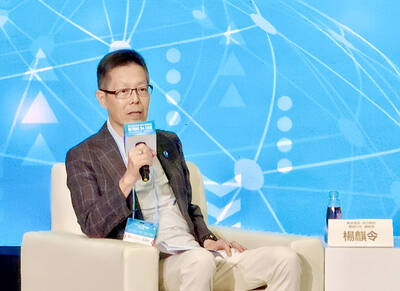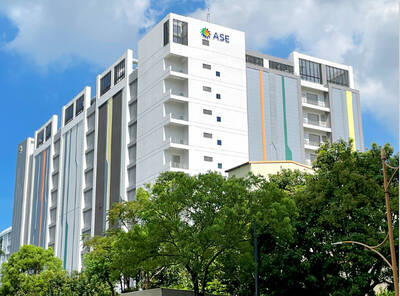The EU announced yesterday an 18 million euro (US$25 million) investment in an “ultra high-speed” Internet system to underpin the next generation of mobile services.
“Europe’s research know-how will continue to set the tone for the development of mobile services and devices around the globe, just as we did in the past decades with the GSM standard,” EU Telecoms commissioner Viviane Reding said.
The funding will be released on Jan. 1 for research on what is known as Long Term Evolution (LTE) Advanced technology, the high end of the fourth generation of mobile technology which should offer users “mobile internet speeds up to a hundred times faster than current 3G networks,” the European Commission said.
The new LTE technology, not the advanced version which the EU will fund, is being tested by mobile operators in Finland, Germany, Norway, Spain, Sweden and the UK and is expected to be commercially available in Sweden and Norway in the first half of next year.
SPEED
That will provide mobile internet speeds of up to 100Mb per second, 10 times faster than the 3G mobile networks.
“LTE technologies will turn mobile phones into powerful mobile computers. Millions of new users will get ultra high-speed internet access on their portable devices, wherever they are,” Reding enthused.
LTE Advanced said it would provide lower prices and mobile broadband speeds up to 1Gb gigabit per second.
This would allow excellent mobile access to televisions and video-on-demand systems for example.
Between 2004 and 2007, the EU gave 25 million euros to LTE development, leading to the first blueprint for an LTE-based network infrastructure.
The 18 million euros will go to the enhanced version, LTE Advanced.
CONSORTIA
Next month the commission will open negotiations on the details with project consortia, including the flagship ARTIST4G which united 4G industry and researchers from the UK, Finland, France, Germany, Italy, the Netherlands, Poland, Spain and Sweden.
The new projects are expected to begin in January.
SPECTRUM
LTE uses radio spectrum more efficiently, enabling mobile networks to benefit from the “digital dividend” and use frequencies freed by the switchover from analogue to digital TV.
Overall, between 2007 and 2013 the EU will invest more than 700 million euros on researching future networks.
Leading mobile operators and manufacturers around the world such as Orange, T-Mobile, Ericsson, and Nokia have already committed to using the LTE standard. By 2013, operators worldwide are expected to invest nearly 6 billion euros in LTE equipment, market analysts said.

AI BOOST: Although Taiwan’s reliance on Chinese rare earth elements is limited, it could face indirect impacts from supply issues and price volatility, an economist said DBS Bank Ltd (星展銀行) has sharply raised its forecast for Taiwan’s economic growth this year to 5.6 percent, citing stronger-than-expected exports and investment linked to artificial intelligence (AI), as it said that the current momentum could peak soon. The acceleration of the global AI race has fueled a surge in Taiwan’s AI-related capital spending and exports of information and communications technology (ICT) products, which have been key drivers of growth this year. “We have revised our GDP forecast for Taiwan upward to 5.6 percent from 4 percent, an upgrade that mainly reflects stronger-than-expected AI-related exports and investment in the third

Mercuries Life Insurance Co (三商美邦人壽) shares surged to a seven-month high this week after local media reported that E.Sun Financial Holding Co (玉山金控) had outbid CTBC Financial Holding Co (中信金控) in the financially strained insurer’s ongoing sale process. Shares of the mid-sized life insurer climbed 5.8 percent this week to NT$6.72, extending a nearly 18 percent rally over the past month, as investors bet on the likelihood of an impending takeover. The final round of bidding closed on Thursday, marking a critical step in the 32-year-old insurer’s search for a buyer after years of struggling to meet capital adequacy requirements. Local media reports

TECHNOLOGICAL RIVALRY: The artificial intelligence chip competition among multiple players would likely intensify over the next two years, a Quanta official said Quanta Computer Inc (廣達), which makes servers and laptops on a contract basis, yesterday said its shipments of artificial intelligence (AI) servers powered by Nvidia Corp’s GB300 chips have increased steadily since last month, should surpass those of the GB200 models this quarter. The production of GB300 servers has gone much more smoothly than that of the GB200, with shipments projected to increase sharply next month, Quanta executive vice president Mike Yang (楊麒令) said on the sidelines of a technology forum in Taipei. While orders for GB200 servers gradually decrease, the production transition between the two server models has been

ASE Technology Holding Co (日月光投控), the world’s largest integrated circuit (IC) packaging and testing supplier, yesterday announced a strategic collaboration with Analog Devices Inc (ADI), coupled with the signing of a binding memorandum of understanding. Under the agreement, ASE intends to purchase 100 percent shares of Analog Devices Sdn Bhd and acquire its manufacturing facility in Penang, Malaysia, a press release showed. The ADI Penang facility is located in the prime industrial hub of Bayan Lepas, with an area of over 680,000 square feet, it said. In addition, the two sides intend to enter into a long-term supply agreement for ASE to